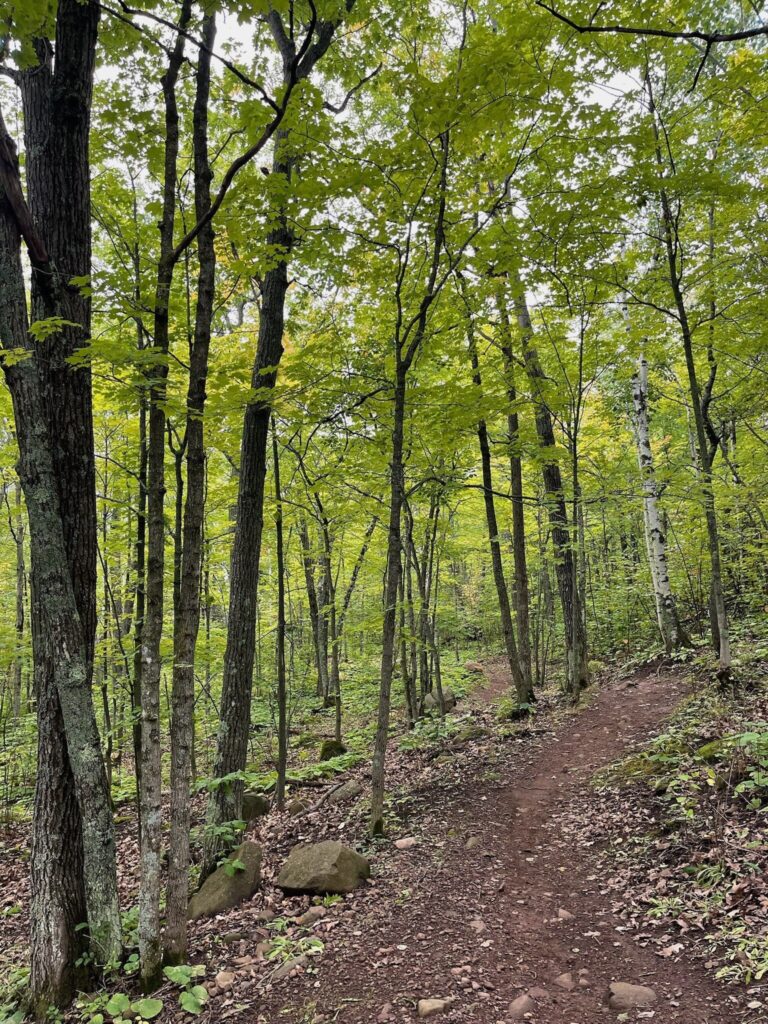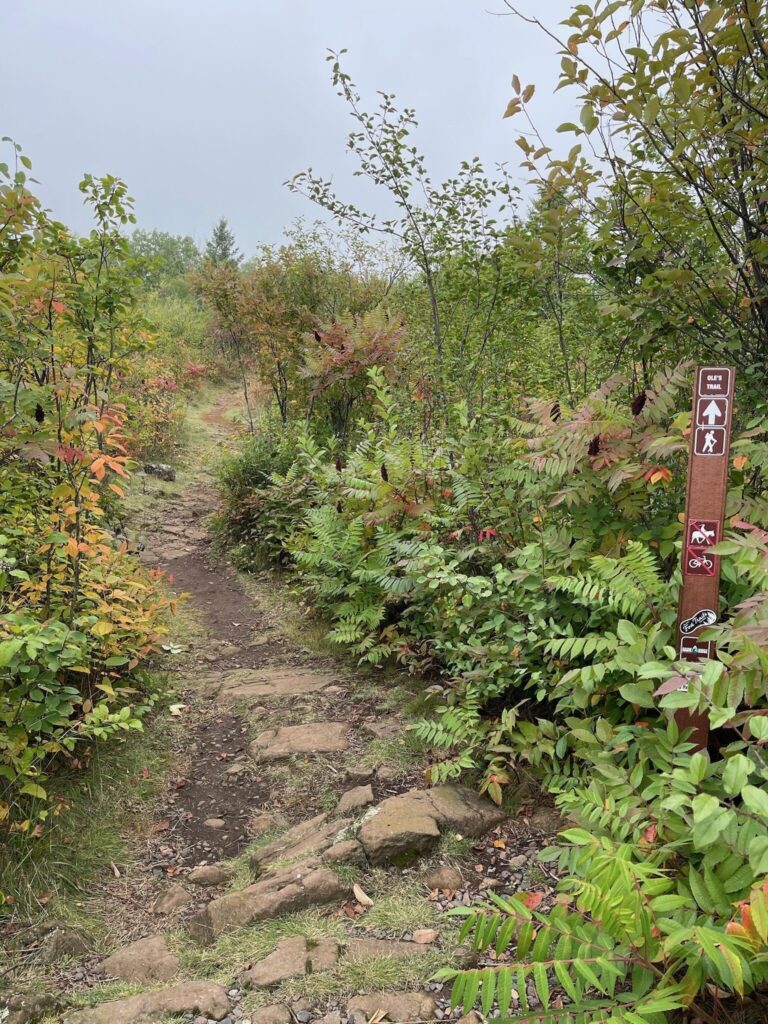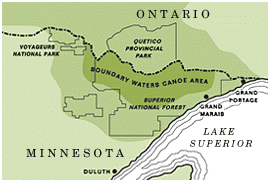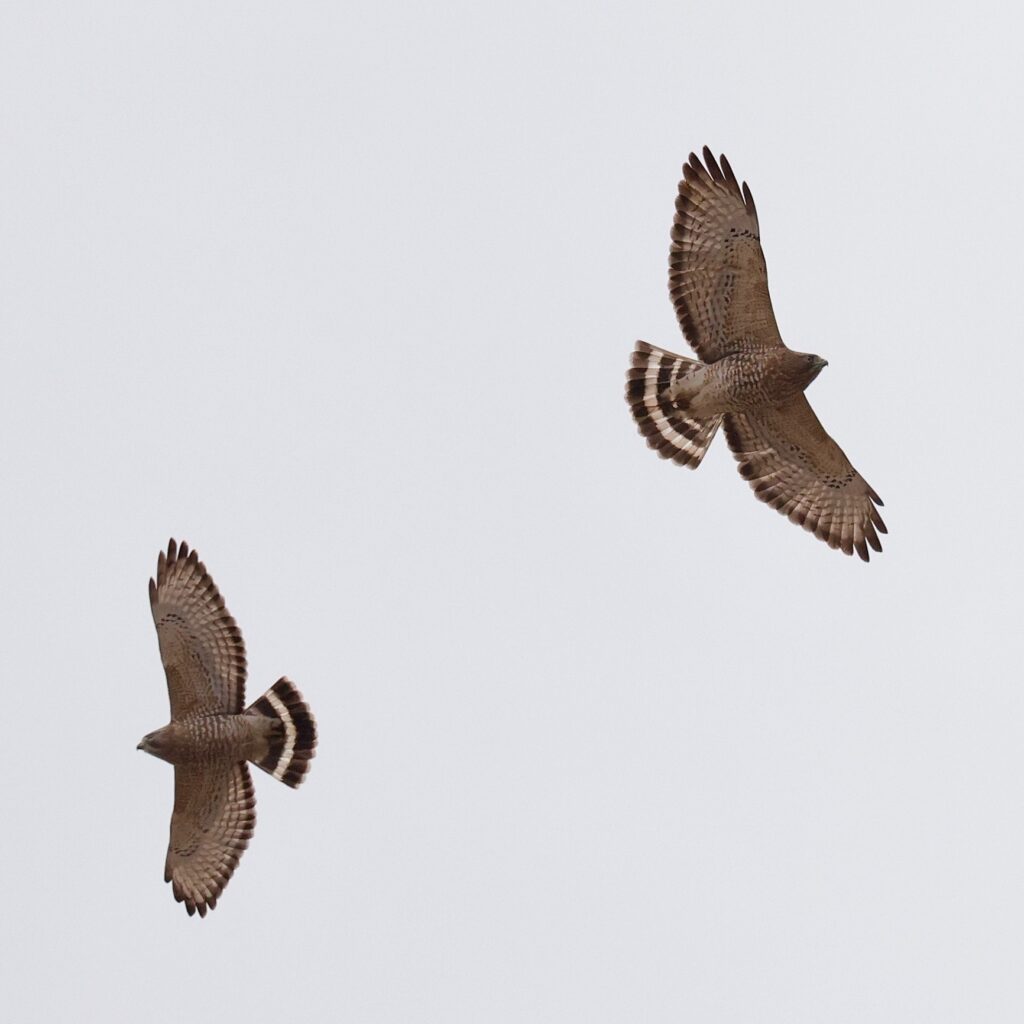
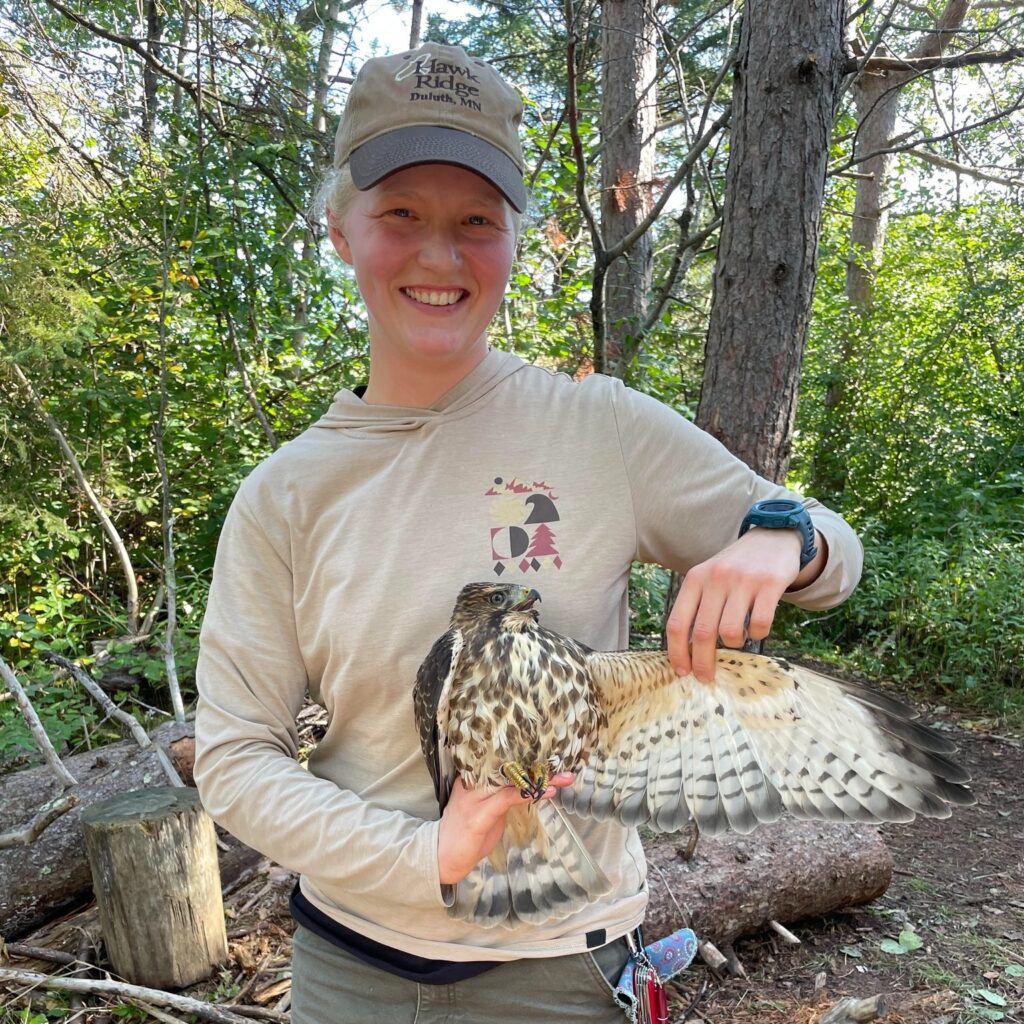
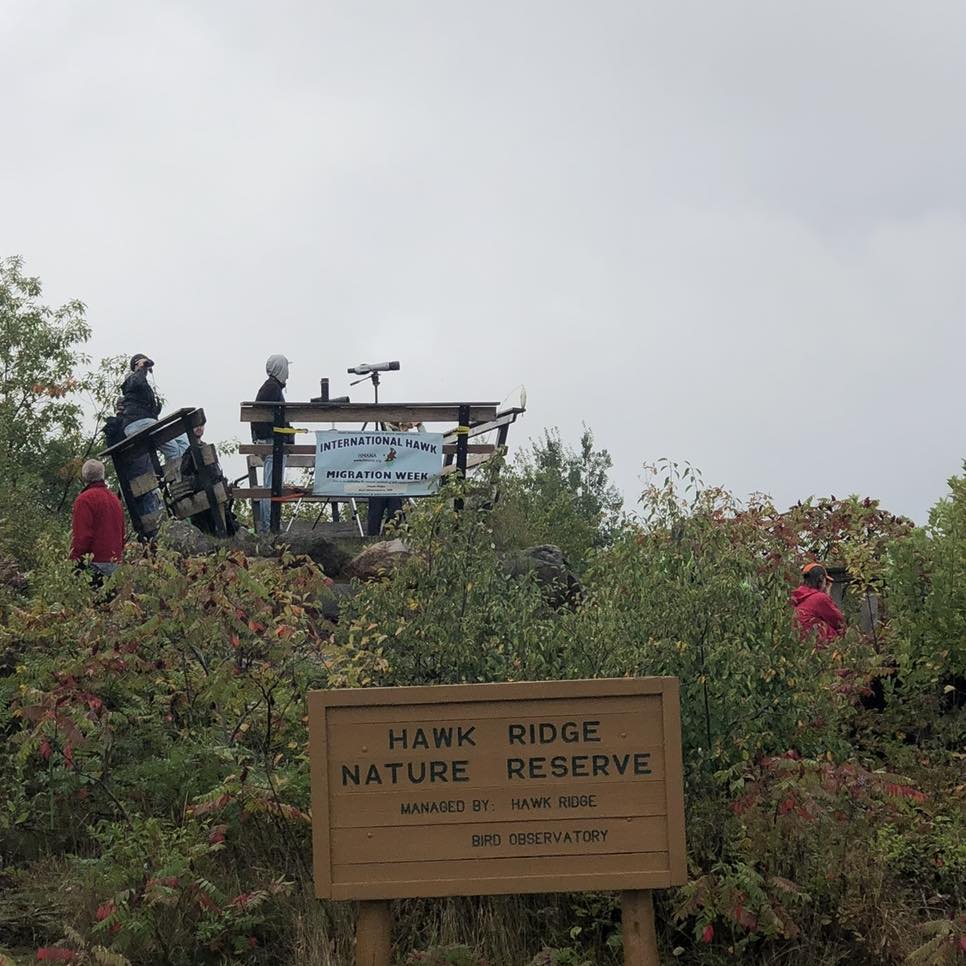
“I think we have loons out on the river,” said a friend. “You do,” I responded, “I’ve seen several,” as I began pointing out all the loons nearby. “And there are bald eagles up there,” my husband added, pointing to the raptors soaring through the sky. “And a blue heron,” I chimed in. “And some coots over there.” “How do you know all this?” our friend asked, jaw dropped in amazement. “We spend a lot of time outside,” my husband chuckled.
My spouse and I often claim the title of being self-taught outdoors people. From field guides to interpretive signs, and apps to online research, we’ve let curiosity guide our journey into learning about the outdoor world. But we’ve also had the opportunity to attend incredible programs and meet generous teachers over the years. One of these transformative early encounters was with the passionate and knowledgeable volunteers at Hawk Ridge Bird Observatory in Duluth, Minnesota.
We stumbled upon Hawk Ridge fifteen years ago while traveling home to the Twin Cities from the North Shore. We were mesmerized by the diversity and abundance of birds above. Even more impressive were the volunteers with their extensive knowledge, matched only by their infectious enthusiasm and generosity with newcomers like us. We spent most of the afternoon there, learning to identify migrating raptors and listening to visitors and volunteers share their stories of spectacular sightings and chance encounters.
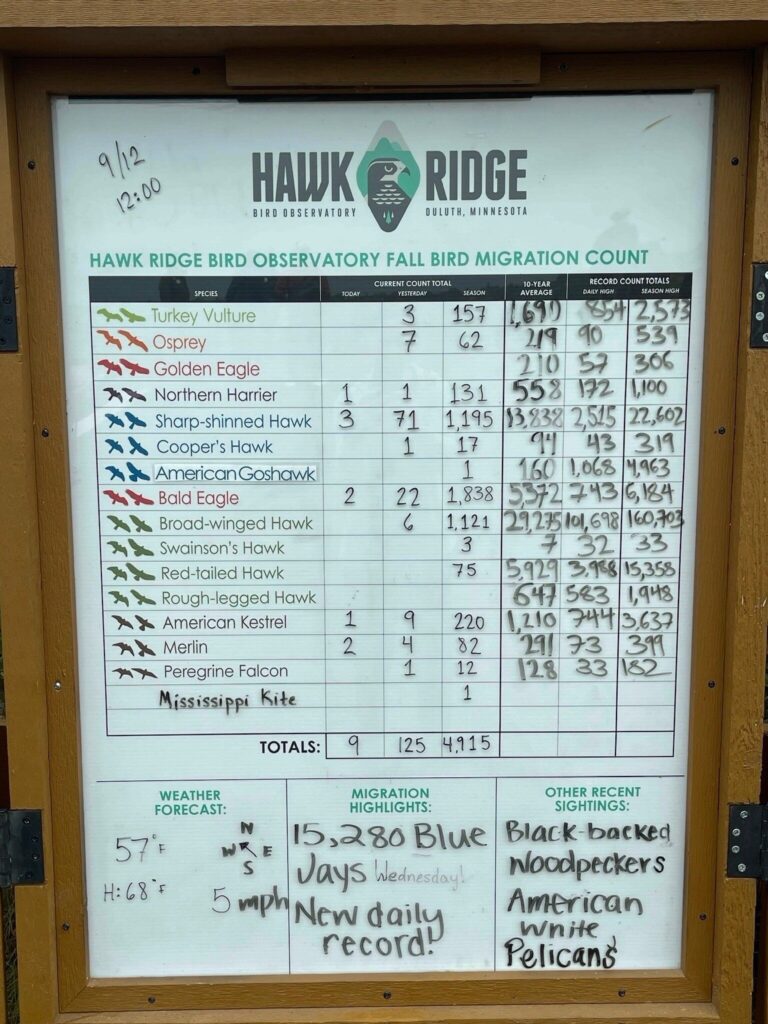
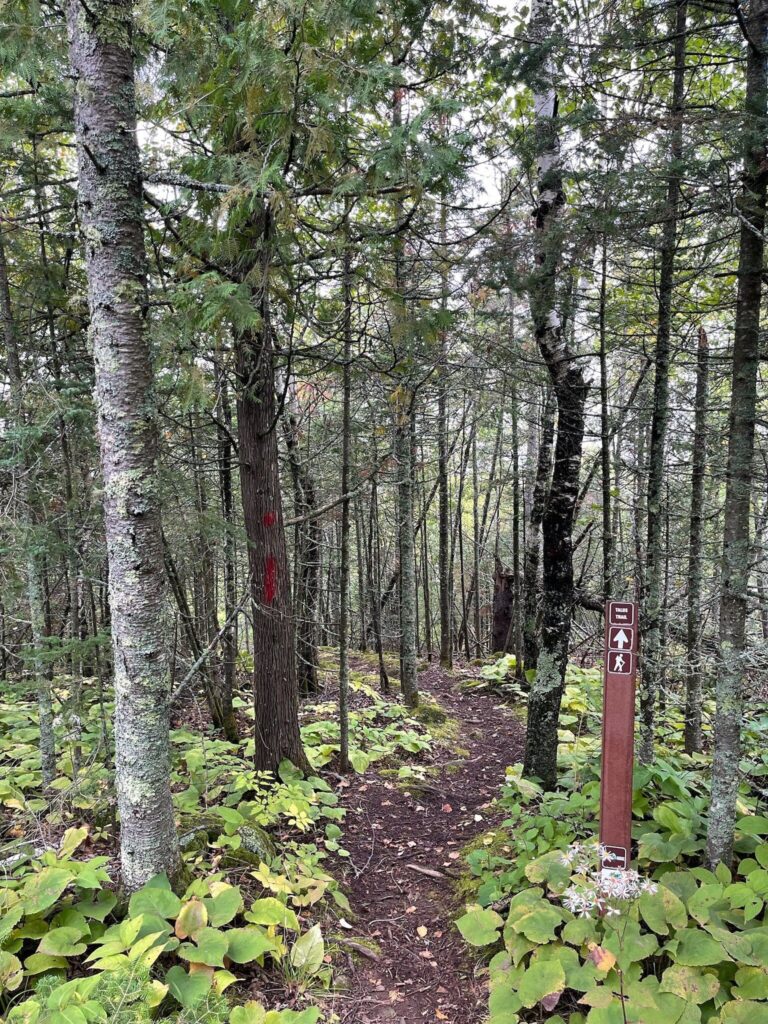
Visiting Hawk Ridge Bird Observatory
You’ll find Hawk Ridge at 3980 East Skyline Parkway in Duluth, perched just north of the Lester Park neighborhood on Duluth’s east side, not far from the start of scenic Highway 61. You can find directions and GPS coordinates here.
In 1951, the Duluth Bird Club (now the Duluth Audubon Society) organized the first hawk watch. The city of Duluth purchased the highest part of the ridge in 1972 with funds donated by the Duluth Audubon Society. The following year, the city acquired nearly 250 additional acres to serve as a buffer zone. Today, the site encompasses 365 acres open to the public and has earned international recognition as a premier raptor migration viewing destination. During my most recent visit, I spotted license plates from across the United States—some visitors had traveled as far as Alaska to witness this natural spectacle.
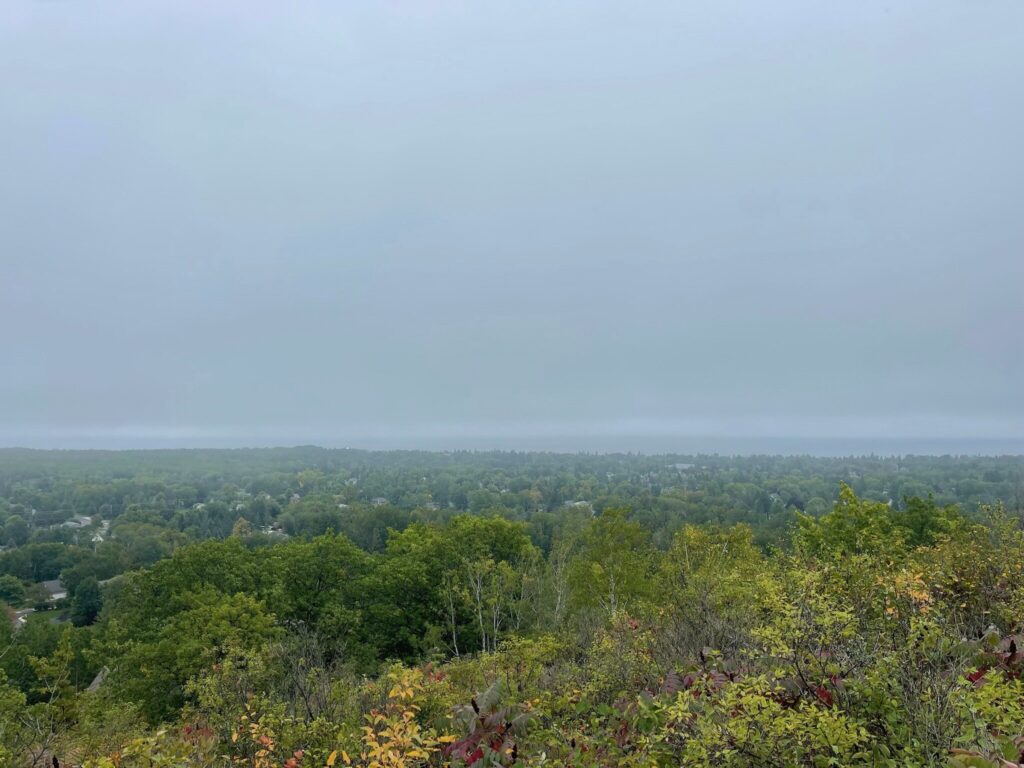
When to Visit Hawk Ridge
The fall migration season begins in mid-August and continues through November. Unlike many wildlife viewing activities, hawk watching hits its peak during the middle of the day when thermal updrafts are strongest. According to their website, weather plays a crucial role in migration patterns. West and northwest winds bring the greatest numbers of birds, while south and east winds typically mean fewer sightings. As one volunteer told me during my most recent visit on a misty, overcast day, “Activity really slows down on rainy days like today.” Expert volunteers and naturalists are on site from 9 am to 4 pm, September 1st through October 31st, weather permitting.
Spring offers another excellent viewing opportunity. The migration starts on March 1st and continues through the end of May. Expect less fanfare and smaller crowds—perfect if you prefer a more intimate wildlife experience. You can learn more about spring migration here.
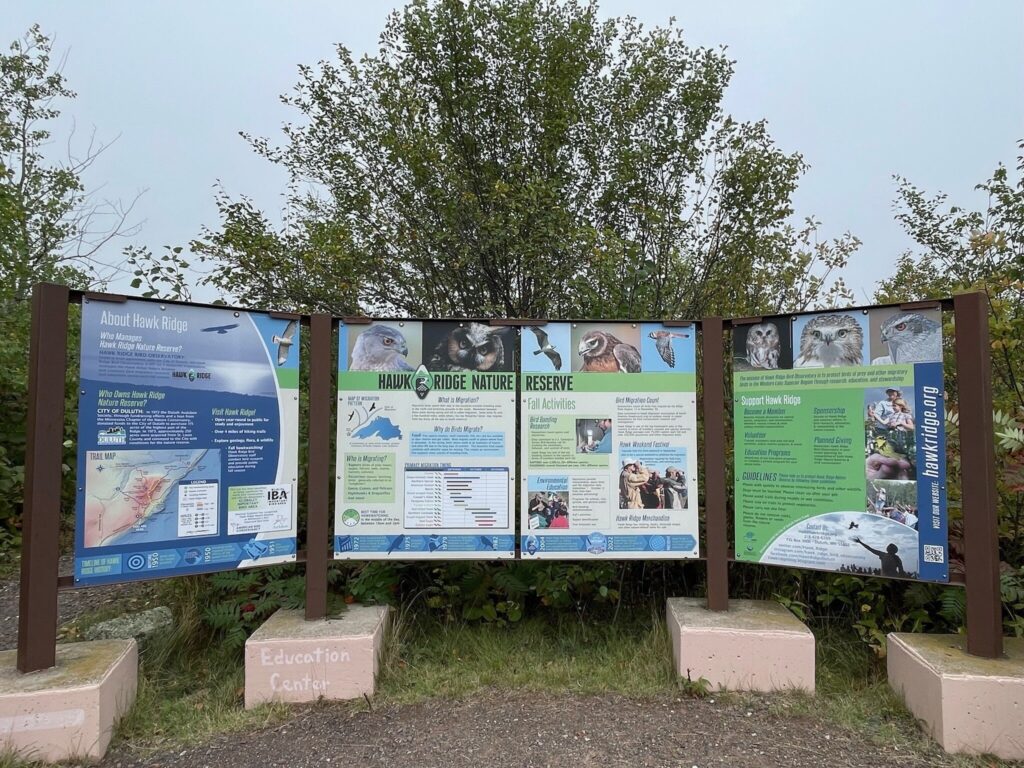
What to Do at Hawk Ridge
While the fall bird migration is the main attraction, there’s plenty more to discover. Before your visit, check their events page for schedules and descriptions of fall weekend programs. The observatory also offers captivating evening owl programs you can learn about and register for here.
The nature reserve features four miles of scenic but rugged hiking trails—another fantastic way to experience fall colors and migration activity during busy weekends. The trails are color-coded and well-marked, though I recommend printing a map beforehand or snapping a photo on your smartphone before hitting the trail.
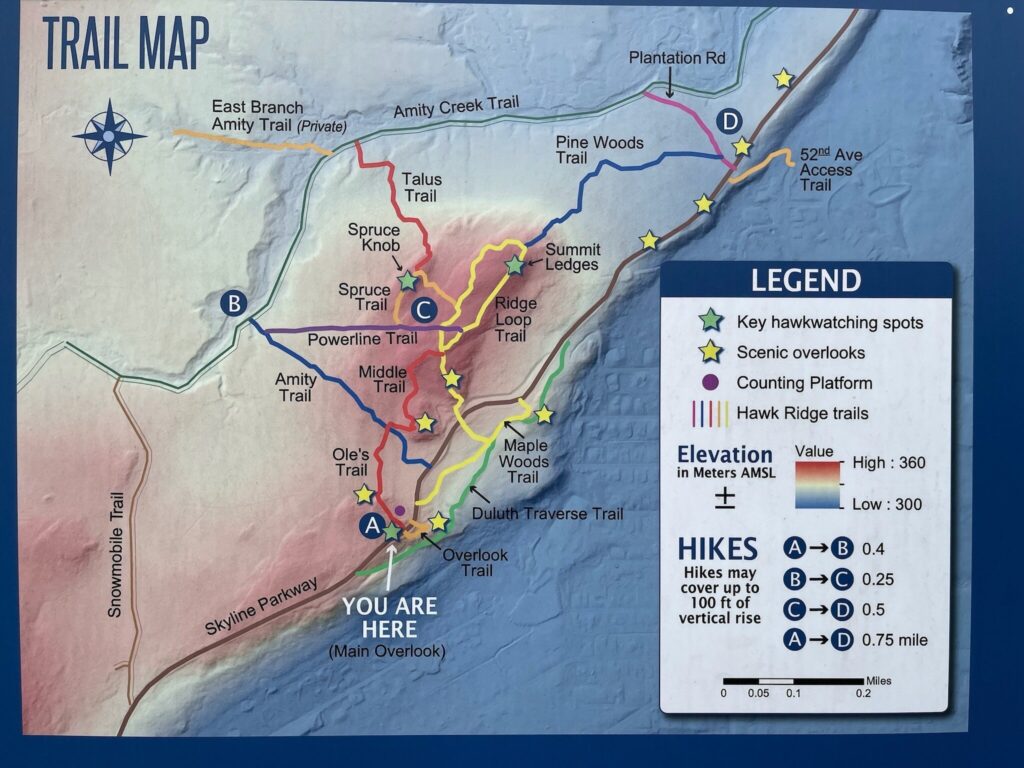
Prepare for Your Visit
Hawk Ridge is a delightful experience for wildlife and outdoor enthusiasts of all ages—especially families. If you’re new to the region, Northeast Minnesota weather might surprise you. I’ve experienced all four seasons within 24 hours here, so I always come prepared with layers and rain gear. Pack water, snacks, and a camp chair for extra comfort. During the fall season, you’ll find a portable restroom and merchandise trailer stocked with bird-related books, gear, snacks, and drinks.
As you plan your trip, check out BirdCast, a migration forecasting tool powered by The Cornell Lab. This site offers bird migration forecasts for the entire United States plus live migration maps. You can even sign up for migration alerts to time your visit perfectly.
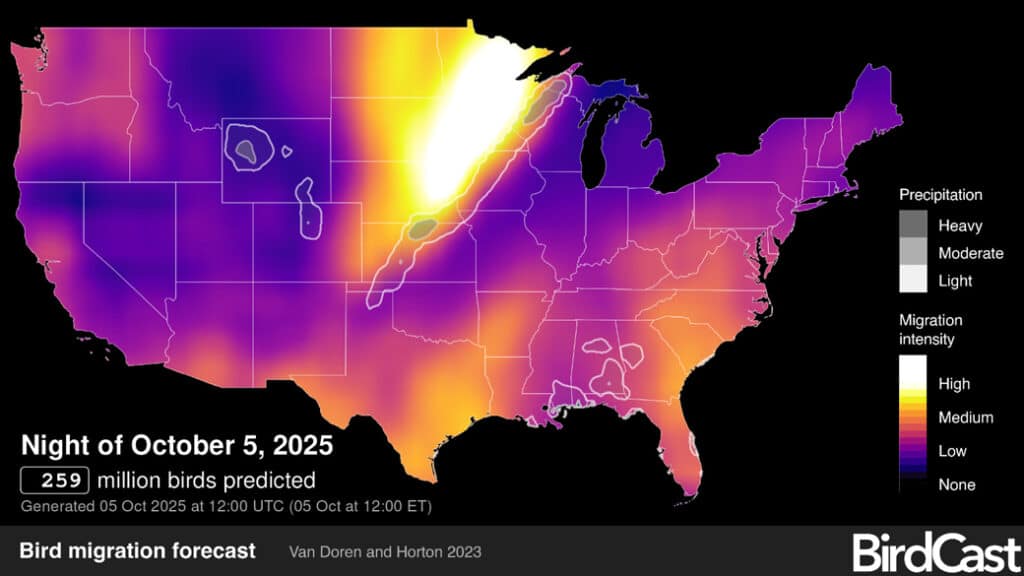
Hawk Ridge maintains an informative, easy-to-navigate website. I highly recommend downloading their Hawk Ridge ID Guide, which details migration timing and raptor identification tips. For fellow bird nerds, their Raptors at a Glance guide offers deeper insights. This guide covers fascinating details about each species—from nesting habits to dietary preferences—making it an excellent educational tool for families.
You can explore individual species on their Birds of Hawk Ridge page. If you’re hoping to spot a particular raptor, their Migration Statistics page will help you plan the optimal timing. The observatory also shares interesting updates on social media—follow them on Instagram and Facebook.
The Hawk Ridge Bird Observatory is an essential stop for any nature enthusiast, especially during fall migration. While this guide provides everything you need to know along with valuable resources for deeper exploration, nothing compares to experiencing this natural wonder firsthand. Trust me—you’ll leave with a new appreciation for the incredible journeys these magnificent birds make twice each year.
